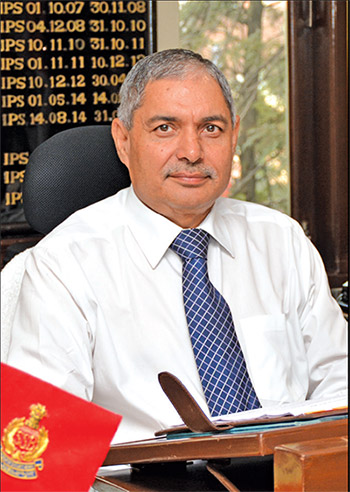‘The only requirement, in terms of equipment and vehicles, is for our units that are deployed in the Kashmir valley and LWE regions’
What is SSB’s current strength?
 SSB is almost a one lakh strong force now. It has a sanctioned strength of 99,500 at present and while there are some vacancies, they are likely to be filled by the end of this year. The process of filling these vacancies is already underway. The SSC has listed the vacancies and the forms have been collected from candidates. The examination process will now start soon. The staff selection commission conducts the majority of recruitments for the entire Central Armed Police Forces; this includes the posts of constables and sub-inspectors.
SSB is almost a one lakh strong force now. It has a sanctioned strength of 99,500 at present and while there are some vacancies, they are likely to be filled by the end of this year. The process of filling these vacancies is already underway. The SSC has listed the vacancies and the forms have been collected from candidates. The examination process will now start soon. The staff selection commission conducts the majority of recruitments for the entire Central Armed Police Forces; this includes the posts of constables and sub-inspectors.
As of October 2018, SSB had over 18,000 posts lying vacant. Has anything been done to fill the vacancies?
Firstly, recruitment for general duty positions is being carried out by the staff selection commission. At the gazetted officers’ rank, the recruitment is being carried out by the Union Public Service Commission (UPSC) and we are getting regular intakes at the assistant commandant level. The sub-inspectors and constables are being directly recruited by the SSC. There were delays in the recruitment by the SSC in the last two-three years but after the matter was taken up by the government and the ministry of home affairs, the recruitment process is back on track by expediting recruitment at these levels. Secondly, we are directly recruiting personnel for specialised cadres like communications, medical staff, etc. Therefore, overall, recruitments are going well, and we are able to fill vacancies every year.
In late 2017, the Union home minister operationalised a new intelligence set-up of the SSB. How effective would this new intelligence set-up be?
SSB came into existence in 1963 following the Indo-China war. It was basically an intelligence organisation working under the cabinet secretariat. It was a very practical and efficient organisation, especially with regards to intelligence gathering along the Indo-China border in areas like Uttarakhand, Ladakh, upper-Himachal, Arunachal Pradesh, and Assam. The organisation has always had an intensive background of intelligence gathering. Even till the Kargil war, SSB was primarily involved in intelligence gathering. Since 2001, SSB’s role has transformed to that of a border guarding force. Now we are assigned with the mandate of guarding the friendly borders along Nepal and Bhutan.
However, even after the transformation of our role and mandate the old intelligence portion of the SSB has continued with us and has been helping us in intelligence gathering. Presently this Intelligence wing, also called the civilian wing, has with time depleted to a strength of 2100 due to retirements and other factors, but they still carry out intelligence gathering. Since it (civil wing) was under the process of being permanently transferred to the Intelligence Bureau, last year, the government sanctioned a combatised intelligence setup to fill the vacancies that would lie vacant after their transfer to Intelligence Bureau. So, the civilian wing is currently in a transition phase and they are sharing their techniques and nitty-gritties of the intelligence job with our jawans and officers of the new intelligence setup. We have a dedicated intelligence training school; One in Kolkata and one in Mahipalpur (Delhi) and we are regularly training our combatised personnel for intelligence gathering. They’ve picked up the nuances of the intelligence work quickly and are doing a fantastic job.
Is SSB’s current inventory of equipment and vehicles adequate for its dual role of border management and internal security?
You must be logged in to view this content.

